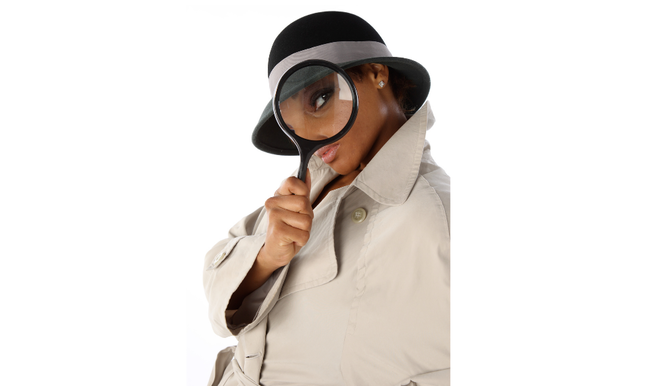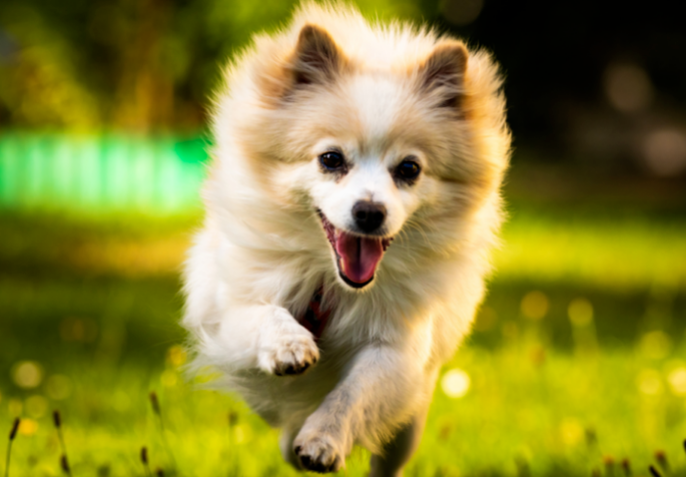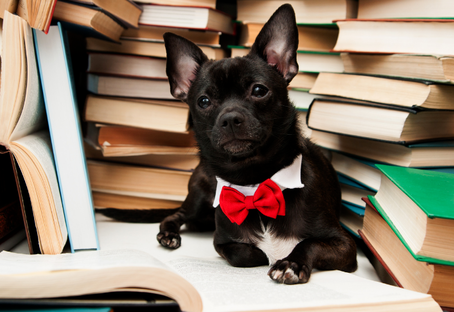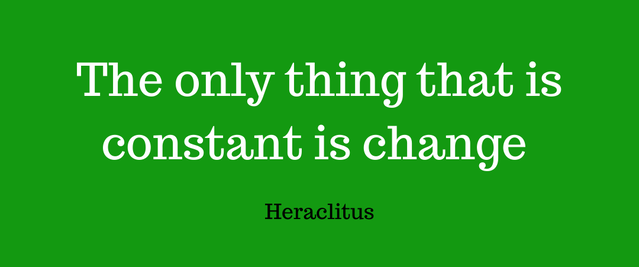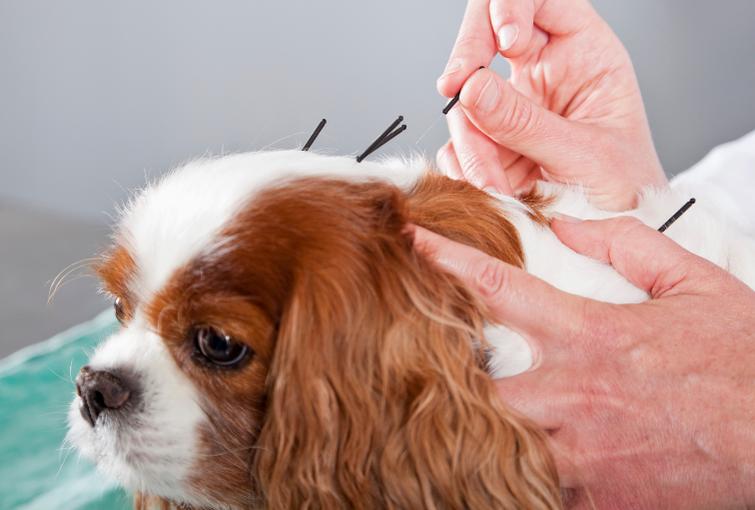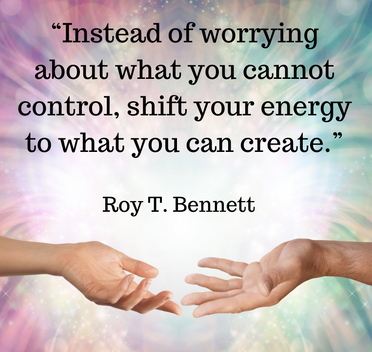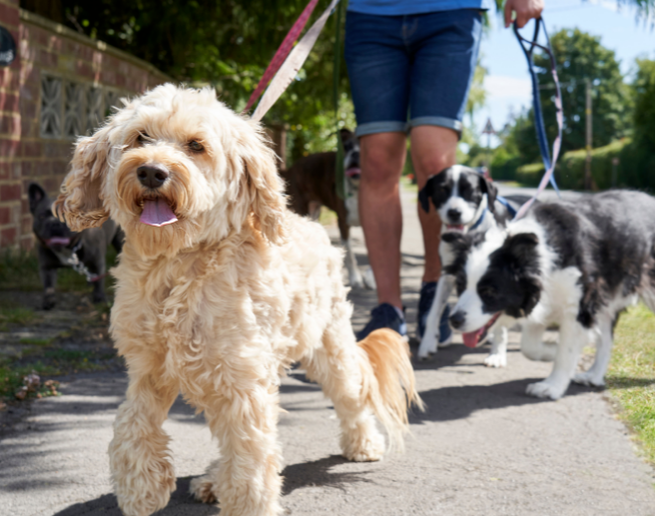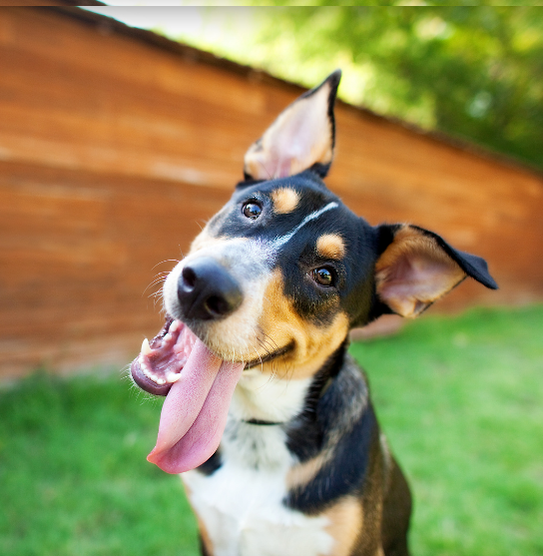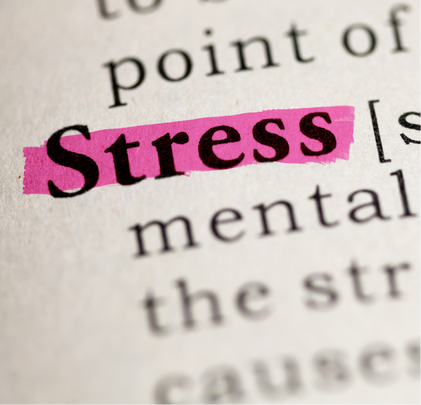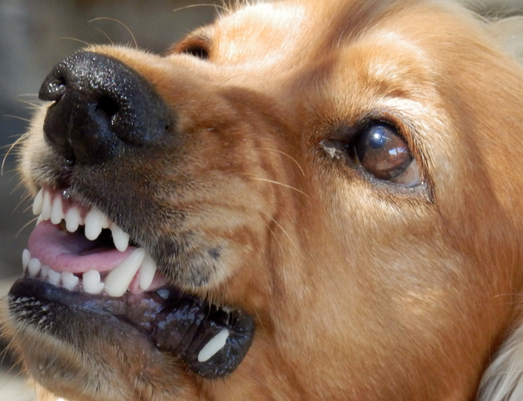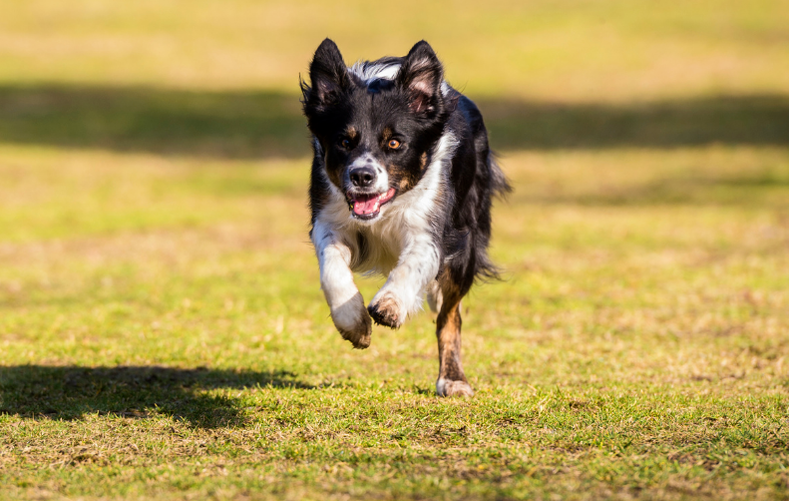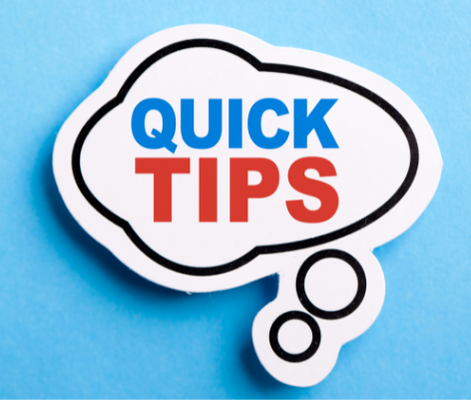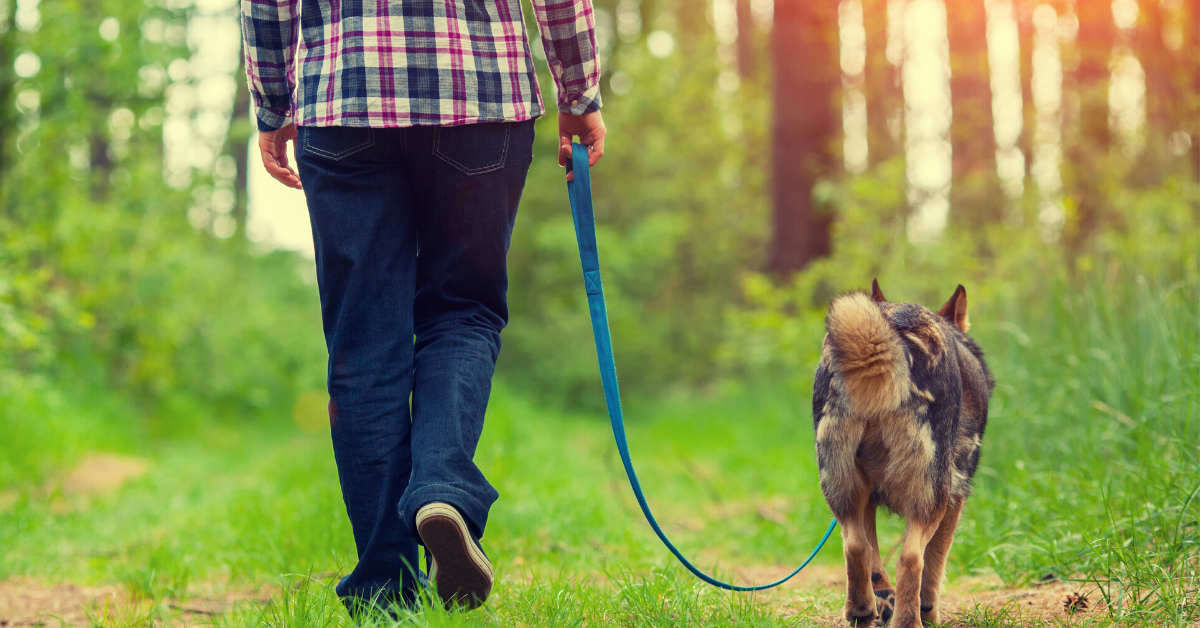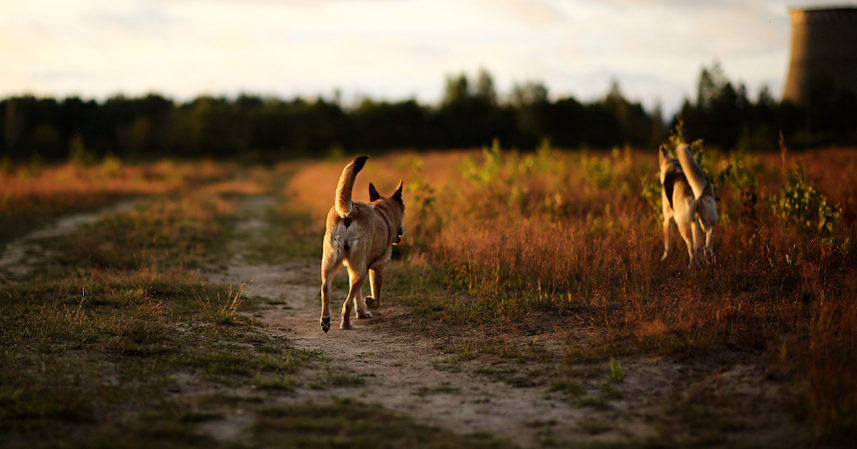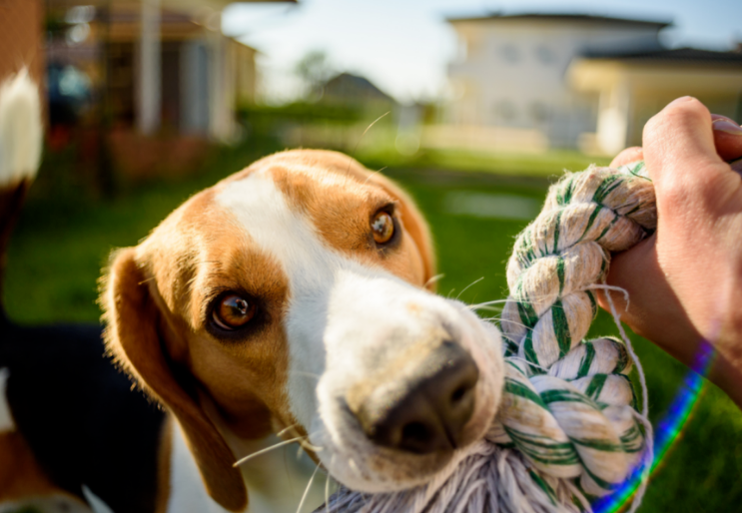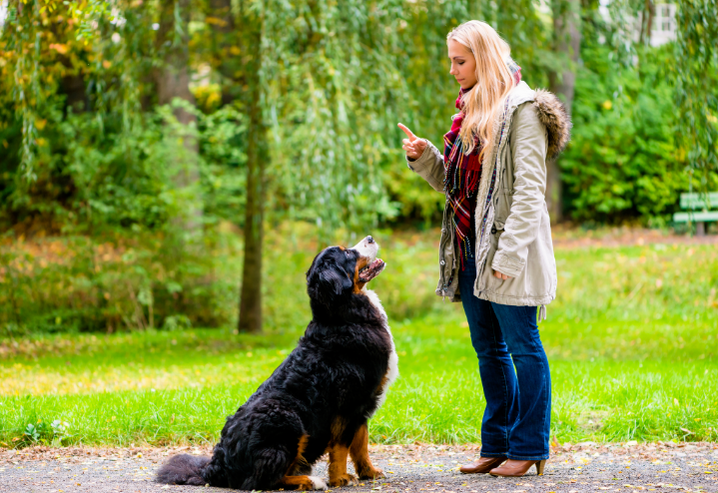|
5/23/2021 0 Comments The Clue is in The CueWe humans like our dogs to do the things we ask them to do. We used to call this communication, a command. That always seemed too harsh, and army-like. Now we call them cues. A cue is a piece of information that causes behavioural change due to the detection of a reward and is part of a habit-forming chain. See my previous article for information about how habits have formed The Importance of Measuring Progress. We like to think that our dogs understand what we are saying to them. The truth is they don’t, not unless we teach them what a word means. If you want to know what verbal communication means to your dog without teaching them its associated behaviour try this exercise. Stop Speaking PurpleFind someone to work with
This is confusion is what our words mean to our dogs. We chat all the time to them, thinking they clearly understand. They don’t understand our words, so perhaps we should stop talking ‘Purple’ to them. ToneOur dogs understand our tone – a higher pitch is inviting, a lower pitch communicates to leave or stay away. Why do our dogs understand this? It is because this is the communication that they use with each other. Our dogs interpret our words by trying to relate them to what they already know. Want to try this out? Stand away from your dog and say ‘Pup, Pup’ in a high-pitched voice and watch your dog run towards you. They are responding to the tone in our voice. Now say ‘Pup, Pup’ in a low and gruff voice. They will look at you with hesitation, trying to work out what you want but keeping their distance. So how do we teach our dogs to understand us? We can use visual or verbal cues. Our dogs seem to understand more than our words so what have they learned about us and how? Visual CuesOur dogs react to more than our verbal cues, they are genius at reading our body language. They watch how we move, what we point at, the speed of our movements, the facial expressions that we make. Through careful observations, they have learned to interpret this. A hand that picks up a lead means we are going for a walk. A turn towards that cupboard might mean it is food time. They can even read chains of events. Think about your morning routine and what predicts you leaving the house. These are visual cues. The signals that our dogs look for to predict events. Often we won’t even know that our dogs are reading us. Sometimes they will read our body language incorrectly, after all, unless we teach them what our gestures mean they are guessing. We can incorporate hand signals into our dog training. It is to our advantage to teach them these before we teach them words. Research studies highlight that dogs learn visual cues more quickly than verbal communications. Verbal CuesIf visual cues work so well why do we teach verbal ones? Humans express themselves with words. This is how we communicate with each other. Children learn words by associating a word with an object. A young adult human understands approximately 60,000 words. Our vocabulary continues to develop as we get older. As we are exposed to the new subject matter and new technology we learn new words. A year ago no one used the word coronavirus now it is an everyday word with an attributed meaning. Have you ever thought about how many words your dog understands and how they have learned these? Dogs also learn through association. Dogs learn to interpret our body language and our tone. Research has shown that dogs are better able to learn when both the left and right side of their brain is activated. The left side of the brain is involved in understanding words and the right-hand side translates tone. It is worth bearing this in mind when we are teaching our dogs a new word. When words are linked to a pleasurable reward-based activity such as food, playing, or affection and a tone that they like they learn faster. When we do this we increase the relationship bonds between us and enhance communication. We can build our canine vocabulary by:
Environmental CuesOur dogs also respond to environmental cues – these are cues that do not come from us. For example, the doorbell rings and your dog goes to the door to see who is there. Or there is sunlight coming through a window so lie down on the floor here. Pop your dog into the car and drive to a certain place every day and they soon learn that a smell, a rumble in the road and, the swing of the vehicle means they are nearly at their walk. Using environmental cues can be useful as it takes out the need to always instruct our dogs what to do. We can teach them that a pavement edge means they should sit and wait patiently or seeing their food bowl means they should wait quietly. There are a variety of different ways that environmental cues are useful. Dogs are clever and are capable of learning a great deal of information from us. We owe it to them to try to understand how they learn. When we are clear with our communication and teach them in a way they can understand a beautiful harmonious relationship occurs. Need Help?If you need help understanding how to teach your dog please give me a call.
I offer individually tailored 1-2-1 Canine Coaching Sessions which may also be helpful. Each session is 1-2 hours long and includes a follow-up email report and telephone support. Sessions start at £45, packages are available for multiple sessions.
0 Comments
We often don’t notice that our environment is constantly changing. We don’t see our progress as we learn new things. As we gradually evolve into new habits, routines, and behaviours we don’t acknowledge they have happened. We simply accept the latest status quo. Often we don’t even realise a new habit has developed. How Habits Form?
Creating Training ObjectivesSo now we know how a habit is acquired, we can begin to measure our training progress using objectives. Setting measurable goals allows us to track our training progress. It allows us to see whether we need to raise or lower our training criteria, making it harder or easier for our dogs to complete it and form habits. By setting goals we can work out what we want to accomplish and what limitations we may encounter. We can identify how many times we need to repeat a training activity to consider it successful and when we can move on to teaching something else. It helps us set realistic goals. There is no point trying to swim the Channel if you haven’t learned to swim yet. When we set ourselves goals that can be measured we recognise whether our investment of time and effort is worth the outcome. It helps us commit to the purpose of training. Finally, we can acknowledge the length of time it will take to complete an activity. We can remember to set measurable goals by using the acronym: · Specific (simple, sensible, significant) · Measurable (meaningful, motivating) · Achievable (agreed, attainable) · Relevant (reasonable, realistic and resourced, results-based) · Time-bound (time-based, time-limited, time/cost limited, timely, time-sensitive) We create habits by training. We are training our dog’s brains to create habits. Every behaviour is focused on the desire to obtain a reward. When we measure our training progress we can identify what is blocking habits being formed. Do You Need Help?If you need help setting training objectives please give me a call.
I offer individually tailored 1-2-1 Canine Coaching Sessions which may also be helpful. Each session is 1-2 hours long and includes a follow-up email report and telephone support. Sessions start at £45, packages are available for multiple sessions. Complementary Therapies are a useful addition to medical treatment from your vet. Their usage has grown in the general population in the last 40 years and they are now used widely for both humans and animals. There are many therapies available that are beneficial to dogs. Here are the most popular: HomeopathyThis therapy works by introducing a substance that is similar to the symptoms being experienced by the animal – therefore treating ‘like with like’. A homeopathic practitioner makes pills, creams, or ointments that have a substance that is highly diluted and shaken at high speed. Each animal is treated as an individual and looked at holistically (mental, emotional, and physical). These preparations are available to buy from health shops in low dosages but for higher potency, a homeopath must prescribe them. It is noteworthy that some of the substances used within homeopathy and toxic in high doses and therefore a qualified practitioner should be sought. Bach Flower EssencesThis therapy uses the essence of flowers in a tincture form. Edward Bach discovered that plants mixed with sunlight could be used to resolve mental and emotional issues. The essence is either dropped into water or directly into the mouth; both humans and dogs. They can also be massaged or stroked onto a dog’s paws. Bach Flower Remedies are the most well-known flower essence remedy but not the only one. Within the Bach system, there are 38 different remedies; the best-known remedy is Rescue Remedy, which is made from a combination of essences. Remedies can be purchased over the counter however for good results it is best to see a practitioner for a prescription. None of the essences are toxic and can be used in conjunction with allopathic and homeopathic medicine. AcupunctureThis therapy involves the insertion of fine needles into specific points on the dog’s body (known as Acupoints). The purpose is to produce a balancing effect of the meridians (Traditional Chinese Medicine theory) or stimulation of the body’s natural repair mechanisms (Western Medicine theory). It is reported that 95% of dogs relax when this practice is carried out. UK Law states that only a qualified vet can perform Acupuncture on animals. This could perhaps explain the wider acceptance of this therapy as a legitimate treatment. There is a growing evidence base for the efficacy of Acupuncture in humans and clinical trials have been conducted for the use of Acupuncture in managing pain in animals. Tellington Touch (T-Touch)This therapy is a gentle and respectful method of training dogs and comprises: bodywork called T-Touch, groundwork exercises, T-Touch equipment, and Intention. T- Touch uses circular movements from the practitioner’s fingers and hands applied over the dog’s body. Linda Tellington-Jones the founder of the system states the purpose of T-Touch is to “stimulate the function and vitality of the cells in an animal’s body and to activate unused neural pathways to the brain.” It is possible to learn the movements from an instructor and there are a number of introductory courses run across the UK. There is some evidence-based research to support that T-Touch does have a relaxing effect on the parasympathetic nervous system and brain wave patterns. ReikiThis is an energy-based therapy and works by the practitioner being able to channel universal energy (Chi/Qi) to promote an emotional, physical, psychological, and spiritual balance. The practitioner can lay hands on the recipient or send it via distance. When treating a dog it is usually done without hands-on practice even if the dog and guardian are in the same location as the practitioner. Important NoteThe Veterinary Act 1966 prevents unqualified persons from treating or diagnosing animals. Only a vet registered with the Royal College of Veterinary Surgeons can diagnose a medical condition. If we suspect that our dog is unwell we should get them examined by their vet to identify any underlying medical issues. Complementary Therapies are not an alternative to medical treatment.
Complementary Therapies are regarded as benign (Do No Harm) and therefore most vets will support their use, although some will regard them as bogus. Guardians must let their vet know that Complementary Therapies are being used. “Our deepest fear is not that we are inadequate. Our deepest fear is that we are powerful beyond measure. There are lots of people out there who will happily put you down, criticise you, and make you feel inadequate. Does our own voice have to be one of them? A quick scan through social media posts will reveal no end of people being unkind to one another. When we expose ourselves to negative thinking, it is easy to start believing that we are less than the amazing individual souls that we all are. Why do we do this? What if we stopped this and started believing in ourselves? What would life be like if we had unwavering confidence in our own abilities? Most people suffer from little or low self-confidence when they begin something new. When it comes to training our dogs we need to make effort to learn new skills. As we learn we become more confident and our relationships with our dogs grow. While some people are naturally talented, most of us have to work hard to become good at these things. This requires dedication and practice. But the ability that keeps us showing up to train is a belief in ourselves and our dog. Tips to Build Your ConfidenceBelieve in Yourself Daily affirmation: ‘I believe in myself’ – our thoughts become deeds so practice this every day. When you believe in yourself and choose to be a kind, loving, compassionate and generous person you will be more positive and successful. Dare to Dream Have the courage to dream, to pursue your goals. Do not limit your thinking – if you want to win at Crufts you can, if you want to become part of a Search & Rescue Team you can, if you want to walk in the countryside with your dog off lead you can, if you want your dog not to react to others you can. There are no limits and every dream is possible if you put the work in. We all have capabilities and talents that are not yet discovered, who knows what we may become if we dare to try. Expect Good Things to Happen Set your expectation setting to POSITIVE. If you have positive expectations you will expect good things to happen to you and your dog. You will be positive and focused on the future. It is easy to let your thoughts turn negative after you have had a distressing encounter with another dog or a person. This can cause us a negative bias, an expectation that this will always happen. If we keep ourselves on track and reframe our thinking to understanding that every day is a mystery – it hasn’t happened yet. Who knows what will happen. Exciting isn’t it! Change Your Attitude Stay optimistic. The trick is to learn to be resilient to life. Accept that there will be disappointments along the way, it is in making mistakes that the learning occurs. Learn to bounce back from the trials of your life. Our dogs need us to be positive and forward-thinking so that they may feel safe in our company. Stop comparing yourself to other people. You are a unique individual and no one else can be who you are. Put It In Action When we have belief in ourselves, this must be put into action. What do you believe you can achieve with your dog? What qualities do you bring to your relationship? How can you help your dog be the best that they can be? Put these thoughts into action. When we create movement, we create energy. This moves us forward and when we move forward we grow. It is only when we sit still, that we paralyse ourselves to believe that we cannot do things. Remember if you can imagine it, it is possible. Thoughts become deeds by putting plans into action. Do You Need Help?Do you need help building your confidence – if so I can help?
I offer individually tailored 1-2-1 Canine Coaching Sessions. Each session is 1-2 hours long and includes a follow-up email report and telephone support. Sessions start at £45, packages are available for multiple sessions. 5/18/2021 0 Comments Help My Dog Pulls on Their LeadDo you need to teach your dog to walk nicely on their lead? Ae you sick of being pulled over? Do your muscles constantly ache? Is your dog choking themselves? It can’t be pleasant for them can it? There is nothing more annoying than being pulled about by your dog on their lead. It is dangerous and we all risk injury – us and our dogs. So why do they do it?
It isn’t comfortable for our dogs. It can lead to health problems later down the line. Jerking and pulling our dogs about can cause injuries to their thyroid glands and their back and neck. It can also affect our dog’s mental well-being. If you have ever been pushed around by someone else or had your way blocked by another person, you will know how it feels to have your movement controlled. This can cause our dog to have low energy and in turn poor health. We need encourage our dogs not to pull us about. We can do this by not letting them practice this behaviour and helping them choose to walk nicely. We reward them for doing the right behaviour. When we reward a behaviour we make it more likely to occur next time. When we allow our dog to pull us about it can cause us to become frustrated, this changes our body language. Our dogs can see us as unpredictable and this in turn can undermine our bond with them. When we invest time and effort into building a bond with our dogs we run into less problems. Tension can develop between us if we don’t make this investment. Tension in our bodies can develop in a physical tightness and this can be recognised by our brains as a lack of relaxation. When our dogs feel like this we often see them become reactive, hypervigilant or frustrated by being on their lead. It can also lead to sadness and a sense of helplessness. Sometimes it is not safe to have our dogs off their lead. In these circumstances it is often better to simply remove our dogs from this environment. Or in truth not take them there in the first place. It is better to set our dog up to succeed rather than to let them fail. Prepare and plan your outings with your dog prior to the event. Our dogs are emotional beings and when they are deprived of choices about their movement their mind, body and spirit will stagnate. Like us, our dogs need to feel happy and free. We therefore need to treat decisions about their movement with respect and recognition that we are influencing another individual’s freedom. Whenever possible allow your dog to choose the direction that they move. When we do this we help them feel more in balance and their energy flows more freely in their bodies. There are many methods we can use to train a dog to walk loose lead. Choose one that is kind and doesn’t frighten or cause your dog to get stressed. There are plenty of tools on the market that stop our dog pulling – choke collars, prong collars, electronic collars, anti-pull harnesses. Unfortunately these work and the pulling may stop but at what cost? When you use one of these devices you are hurting your dog. Fortunately using positive reinforcement methods work too. Make a kind decision and use a harness or soft, flat collar, a lead approximately 1 ½ metres long and carry treats with you, so you can reward good behaviour ExerciseHere is a quick exercise you may wish to try:
Do You Need Help?If your dog pulls on their lead and you don't know what to do give me a ring.
I offer individual tailored 1-2-1 Canine Coaching Sessions. Each session is 1-2 hours long and includes a follow up email report and telephone support. Sessions start at £45, packages are available for multiple sessions. It can be hard just to keep showing up in a world that is ‘busy’ and demands so much from us. Our use of technology often means that we are available all of the time. It can feel relentless. Too often we just don’t stop to relax. It can feel like we have a never ending to do list that competes against feelings of exhaustion and a sense of guilt that we must keep going. If we do not take care of ourselves we can end up simply wanting to give up and stop trying. We know from research that this is a stress response and that our emotions are hijacking us and that this stops us from processing logical thoughts Our emotions come from a primitive side of our brain, called the limbic system. This part of the brain controls our flight or fight response and is responsible for controlling our adrenaline and cortisol levels. We can feel aggressive towards other people or feel helplessness and full of anxiety anticipating the next threat to our well-being. A dog’s brain is similar. Our emotions also affect our dogs. Dogs are absolute experts in reading human emotions, looking to the left-side of our faces to gain information. This informs them if we are a threat to their safety or whether we are going to look after them. Often when we are running on empty we become irritated and our body language can become tense as we develop tension in our muscles. Our facial expressions become less friendly and we can appear aggressive to friends and family. Our dogs are sensitive to this body language and can learn to distrust our emotions. Dogs can smell adrenaline and can become sensitised to it - learning that it means we are stressed and best avoided. Before we walk our dogs it can be really useful to 'ground' ourselves. Particularly if our dogs are reactive to their environment or other dogs. This can help bring our focus to the task ahead and stop us thinking about other aspects of our life. Our dogs deserve us being present in the moment with them. We can do this by:
Do You Need Help Do you need help developing your confidence or relaxing with your dog – if so I can help? I offer individual tailored 1-2-1 Canine Coaching Sessions. Each session is 1-2 hours long and includes a follow up email report and telephone support. Sessions start at £45, packages are available for multiple sessions.
5/16/2021 0 Comments Is Your Dog Stressed?Do you worry about your dog? Do they seem uptight or anxious? Are you concerned they are stressed? Stress affects our bodies physically, mentally and emotionally. Some stress can be good for us. It can help us grow and develop new skills. When it is positive stress, it is called eustress. However, the negative kind can cause us distress. It is the same for our dogs. Living in our modern world can be stressful for our dogs and challenge their bodies. Our dogs are exposed to processed food, artificial chemical, environmental contaminants, anti-microbials, sleep disruptions, noise, light disturbance, tobacco, psychological distress, being left alone for periods of time, the list continues.
Our dogs are individuals so each one has a different experience of health and well-being. They do all have a fundamental need to survive and their need to feel safe is all important to them. Emotions drive our dogs to behave in ways that keep them safe and away from danger. Our dog’s emotions are continually changing as they react to their environment. It is important to recognise that stress is an individual reaction, no two dogs will react the same way to a stressor. Stress is a biological response to something that makes our dogs feel threatened. When a dog reacts to stress, their brain activates the sympathetic nervous system that controls the ‘flight or fight response’, this causes the hypothalamus to release neurotransmitters that create a negative feedback loop and the immune system activates to prepare for possible infection. When our dogs feel out of control, fearful or overwhelmed their bodies produce a chemical cocktail of adrenaline and cortisol. It can take up to 6 days for a dog’s physiology to return to normal homeostasis depending on the dog’s emotional reaction. Short periods of stress are unlikely to affect the dogs health and well-being however when stress becomes long term stress it can be seriously detrimental to health. Can you recognise the signs of stress in dogs?
A dog will communicate that it is stressed by increasing distance from the ‘threat’. They will do this by barking, growling and lunging, stiffening up, staring; growling, snapping; and finally biting. Or they will try to make themselves smaller and less of a target to the threat - yawning, blinking, nose licking; turning their heads away; turning their bodies away, sitting, pawing; walking away; creeping, ears back; standing crouched, tail tucked under; lying down, legs up. WellnessWellness is a balance of physical, physiological, psychological and spiritual health. It is important to have restful sleep, have a good diet, and experience peaceful environments. Our dogs need to be able to connect to nature and have opportunities to go outside and get dirty. This creates a healthy immune system. Relaxation is key to reducing tension and it aids the natural flow of energy and removes blockages in subtle energy fields. It is vital that our dogs get to rest and relax in their daily routines. When our dog does not get enough sleep and recuperation time they will experience low health on all levels – physically, emotionally, mentally and spiritually. What Can We Do to Help Our Dogs?
Healthy dogs have ‘wellness’ at a vibrational, emotional, mental, physiological, physical and nutritional level. When we remove stressors from our dogs we reduce the impact on their sympathetic nervous system. Teaching them to relax is key to their well-being and yours! Need Help?Is your dog stressed? Do you need help teaching them to relax – if so I can help?
I offer individual tailored 1-2-1 Canine Coaching Sessions. Each session is 1-2 hours long and includes a follow up email report and telephone support. Sessions start at £45, packages are available for multiple sessions. Do you struggle with your dog coming back to you? Do you want to let your dog off their lead but dread doing so? Do you look at other people’s dog coming back and wish your dog was like that? We all have all witnessed those moments when someone is desperately trying to get their dog to come to them. The dog thinks it’s a great game to play ‘keep away’ or are simply more interested in something else. Maybe that’s you? Nothing seems to work and the dog only comes back when it’s ready. I’ve been there standing on one side of a fence calling my dog, while they just ignored me. Like you, I’ve had those feelings of frustration and embarrassment. Getting your dog to come back to you is relatively easy to train if we do the work to teach them. It is a learned behaviour, so it is important that we understand that our dogs do not come with a setting button that makes them come back. We have to teach them what we want and work to maintain this behaviour We want our dogs to have freedom to make choices. For them to be able to decide where they want to sniff and which direction they want to go. But we need them to come back to us when we ask them to. There are times when we need to go out for a specific amount of time or the environment is becoming uncertain. And we definitely don’t want them chasing other animals and getting us or themselves into hot water. There are hefty fines and penalties for chasing wildlife and the endangering livestock is not something we should ever allow our dogs to do. We don’t want our dogs haring up to people barking and being a nuisance. So what can we do about it? How can we strike the right balance of allowing our dogs off their lead while keeping everyone around them safe? Keep Motivation HighFind out what your dog likes, what do they find rewarding? Some dogs will like small pieces of chicken, cheese or smelly fish pieces. Others will like carrot, blueberries or pieces of apple. Our dogs are individuals and each will have their own preference. You can create a smorgasbord for your dog and find out what they like best. Once we have found out what they like we can use this to reward behaviour we want to see more of. Capture AttentionReward your dog every time they are naturally close to you. This will teach your dog that hanging out around you is a good place to be. Dogs are natural opportunists. If there is a chance that something good is going to happen near you, that’s the place they will want to be. Don’t Make It Too Difficult, Too Quickly We have to begin teaching recall slowly. Gradually we can build the behaviour to be consistent in more distracting situations. It is wrong to think we can train our dogs to recall in our garden and then expecting them to come back to you when you take them to the park where other dogs or people are. We begin by teaching in a low distracting environment. When our dog knows how to recall, we need to practice it so that it occurs regularly and fluently. Great, you have got that bit. Next we need to generalise the behaviour so that it is happening in a variety of different places and around distractions. I recommend that your dog wears a harness and a long line while we teach this next bit. Remember gradually increase the distractions. Use a journal to record how well your dog is doing and only increase your criteria if your dog is performing recall in 80% of the times they are asked. If it is only 30 – 40% of the time, then you are making it too difficult for them – go back to lower distractions. If you gradually build this rather than try to go fast, you will with any doubt get better results in the long term. Changing Associations Quite often we see dogs performing lovely recalls until the end of the walk. They have learnt that their free time is about to end, they are going on their lead and going home. That’s no fun to a dog that would like to stay out longer. Our dogs read our body language all the time. In fact they are genius at it. They watch our routines and the way we move and can accurately predict what we are going to do next. To stop this problem, practice recalling your dog on their walk, clipping their lead on for a few seconds and then letting them go off lead again. Do this in a variety of different places during the walk so they learn that having their lead put on doesn’t always predict their fun is about to end. Punishment Doesn’t HelpAt some point frustration may take over and we may find ourselves yelling at our dogs to come back. Trust me, this never works. Have you ever had someone yell at you and thought you would like to get closer to them. Nope never, that’s what I thought. In dog training, anything that makes a behaviour less likely to occur is considered a punishment. Our dogs, like us will try to avoid punishment. I mean who wouldn’t? All, we do when we shout at our dogs for not coming back is teach them that we are scary, unpredictable and not someone they can trust. In a dog’s mind, their safety is always of the greatest importance to them. If you turn yourself into someone they consider a bit untrustworthy then guess what they really aren’t going to want to hang out with you. I know it’s frustrating, I’ve been there but please do not yell at your dog for not coming back. Go back a step, realise that their training is incomplete in that particular environment and build it up again. In my opinion, no recall can ever be thought of as 100% bombproof but we can practice to make it pretty close. Make It Fun for You & Your Dog There are lots of ways to teach recall but it is important to keep it fun and not repetitive. If we go to our favourite restaurant every night, eventually it becomes boring and just ordinary. I encourage you to get creative and think of as many different ways to teach your dog to come to you when asked. Get your friends and family involved. If you are struggling for ideas, give me a call. Practice Makes Perfect But Don’t Become a NagOne of the commonest reasons for recall failing is the dog’s guardian has become a nag. They are constantly asking for their dog to come back to them. It is important to practice our recall training, but keep sessions short and focused. If you spend your entire walk getting your dog to come back to you, your recall cue will lose its potency. Your dog will learn to tune it out, in favour of doing something that they would rather do. We can ask for a recall several times on a walk but don’t become repetitive. Our cues should predict something good for our dogs. If your dog needs to be consistently asked to recall, this should act as an indicator that they are not ready for that environment. Use a lead in this environment, it will save you a lot of time and angst. We can very easily corrupt our dog’s recall by not taking things slowly and teaching them well. We set them up to fail by asking them to do too much, too soon. Using rewards will encourage your dog to be with you and remember punishment only teaches distrust. #recall Do You Need Help? Are you struggling with your dog coming back to you – if so I can help? I offer individual tailored 1-2-1 Canine Coaching Sessions. Each session is 1-2 hours long and includes a follow up email report and telephone support. Sessions start at £45, packages are available for multiple sessions.
Many guardians can’t keep their dog’s attention on walks and often trainers tell them they need to be more interesting. Is it really that simple? A good dog walk isn’t just about exercise, it is much more than this It is an opportunity to strengthen the relationship between you and your dog. When it is done well our dogs give us their attention and focus. We must do the same for them – switch off our phones, watch what they are doing, learn how they communicate. Problems appear when we aren’t providing those opportunities to engage with us and often they will entertain themselves if we don’t. We need to remind ourselves it is their walk as much as ours. We can all make more effort to ensure our dogs enjoy being with us. A regular walking routine helps to improve our physical and mental health. Physical benefits include getting fitter, weight loss, better muscle strength, supple joints and general toning. When we walk our bodies release ‘feel good hormones’ called endorphins and these help us concentrate better, have higher self-confidence and gain better sleep. Dogs also enjoy these benefits, like us they have physical, mental and emotional needs. A good dog walk can satisfy these needs and when we take these into consideration, walks become a pleasurable experience and not a chore. Dogs have been bred to seek out human company. If this is not happening we need to ask ourselves why? What is it that competes for your dog’s attention? A potent wildlife smell? Another dog to play with? Something scaring them? During our walks we need to see the world from our dog’s perspective. This isn’t always easy. Our dogs are individuals and their experiences are completely unique to them. We need to learn their language because they do tell us what they need if we take time to listen to them. So how can we improve our dog's walk? Choose An Appropriate Location
Provide Engagement Activities
Think About The Speed
By keeping our focus and attention on our dog during our walks together we will engage them and keep them with us. This simple step will help build the bond between us and make our walks more than just exercise. Do You Need Help?If you need help to stop your dog walks being boring, please contact me using the button below.
I offer individually tailored 1-2-1 Canine Coaching to help you develop your relationship with your dog. We will work together to improve your training skills. Sessions can be in the comfort of your home or in a real life setting to suit your needs. Each session is 1-2 hours long and includes a follow up email and telephone support. Sessions start at £45, packages are available for multiple sessions. Training is the act of teaching a person or animal, a particular skill or behaviour through regular practice and instruction. Getting into the habit of training can be really hard. It takes commitment and a willingness to ‘just do it’. Do you struggle with it? Through repetition we can train our minds to act in a particular way that will lead to competence in that area. We aren’t experts at the beginning, we have to start feeling like a novice and grow. Sounds easy? Not necessarily so - we have all made that commitment to go to the gym or a new class only to give up a few weeks later. According to Jim Rohn, American Entrepreneur and Motivational speaker – “Motivation gets us started; Habit keeps us going.” So often we can decide we want to do something, we start but then something happens and we lose confidence. Humans have a tendency to criticise themselves, creating self-doubt in our minds. Too often we believe we simply haven’t got what it takes to do a good job, so we don’t even bother trying. We unconsciously teach ourselves negative habits that hinder our training or stop it altogether. Let’s look at those common habits and how we sabotage ourselves. PerfectionismSetting excessively high standards for ourselves and our dogs means that when we can’t achieve them. We then experience self-doubt and worry that we are not measuring up to everyone else. If we suffer from perfectionism we do not find any of our successes satisfying. The perfectionist continually believes they SHOULD do better and push themselves and their dogs too hard, resulting in burn out. To overcome this habit remember that ‘Progress not Perfection’ is the key to good dog training. Set up metrics to measure your progress and keep this information to yourself. Competition can be fun, it isn’t always healthy. OverworkingWe overload ourselves with endless tasks and to do lists in order to hide our insecurities. If we work harder no-one will see their shortcomings. We become nothing more than ‘train-a-holic’ pushing ourselves and our dogs to exhaustion to gain outside kudos. To overcome this habit remember the best validation comes from within, not other people. Only take on tasks that are achievable within a specified time limit. Practice saying ‘I AM ENOUGH, I DON’T HAVE TO BE SUPERWOMAN/MAN!’ No Natural TalentWe believe we have to do it right the first time. If we don’t perform well on the first time out, we give up. To overcome this habit remember training is a skill that is built up over time. Everyone has some talent and you get better through practice. Mistakes are where the learning occurs. I urge you to keep a journal so you can see your work in progress. Not Asking for HelpWhen it comes to training our dogs we sometimes can’t see where we are going wrong. We become emotional and believe we are failing. To overcome this habit, next time you feel like you are struggling ask for help, there is no shame in needing a helping hand or a fresh pair of eyes. Creating DistractionsThere are lots of opportunities to learn new things in dog training. Learning is a worthwhile pursuit but if the quest for knowledge hides a belief that you will never know enough there’s a problem. If this becomes an endless pursuit then this is actually is procrastinating. I urge you to learn in the moment, acknowledge your present limitations and ask for help when you need it. When we take time to understand our habits we can make them beneficial to our success. We can train ourselves as well as our dogs. Setting ourselves up for a positive experience is as important for us as it is for our dogs. The next time you feel yourself doing one of the 5 things we do to sabotage ourselves, STOP! THINK! REFOCUS! We can all be a bit kinder to ourselves. Do You Need Help? I can help you if you are struggling. I offer individual tailored 1-2-1 Canine Coaching Sessions. Each session is 1-2 hours long and include a follow up email report and telephone support. Sessions start at £45, packages are available for multiple sessions.
|
Search by typing & pressing enter

